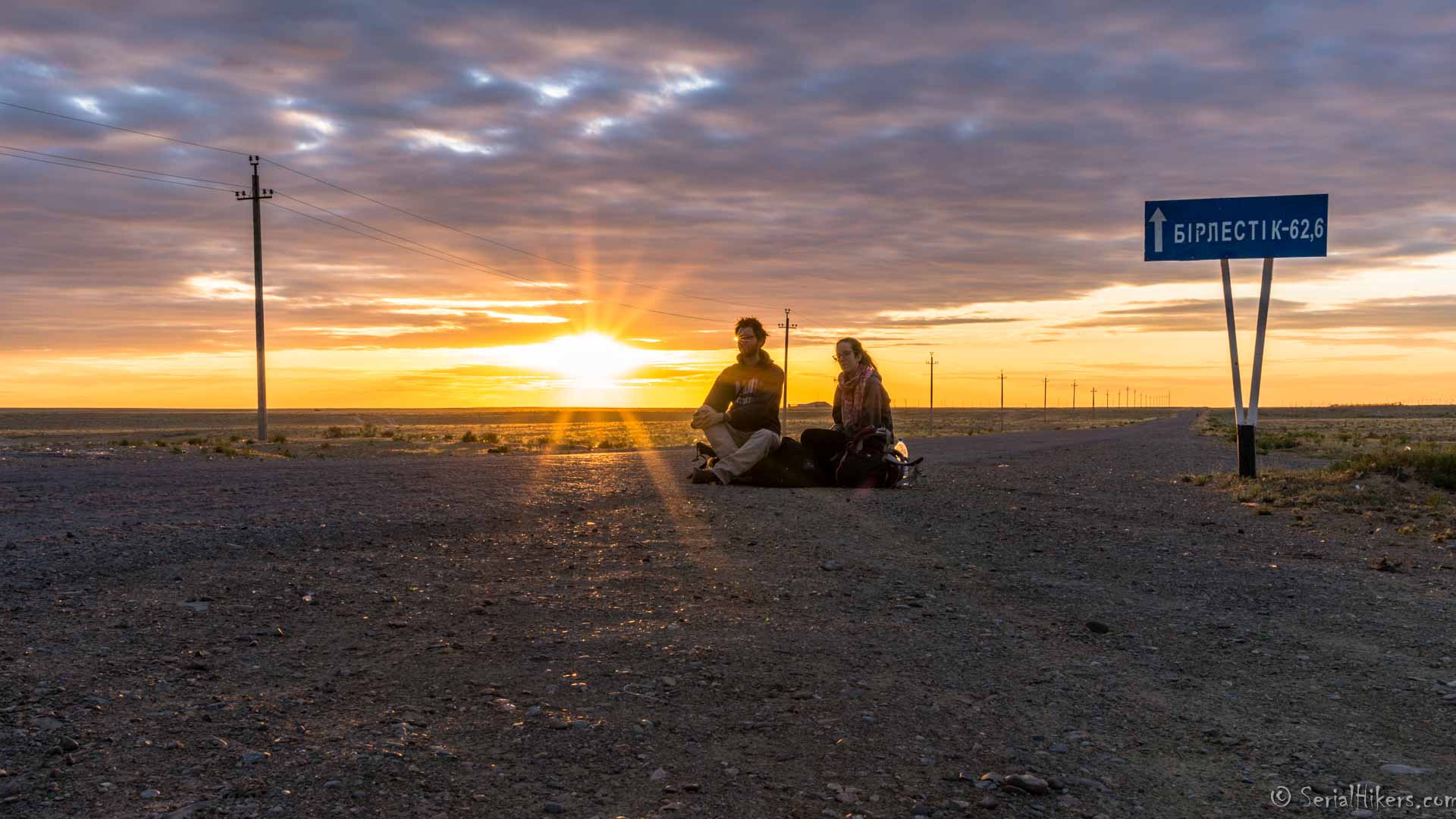We have often been asked this question: “How do you draw your way on a daily basis? How do you manage to plan it?”… And we had a hard time answering it at first: leaving all behind us without a travel guide and traveling day by day, our route was anything but meticulously planned!… We then asked each other the question: “How did we choose our point B from a point A? How did we draw our way after that?”
Choosing the next country to cross
By land
The choice of the next country to visit depends on where we were before: we identify on a map the border countries, choose the country closest to us and the border post to cross; then we spot a stopover city quite close to the border post where lives a friendly host to accommodate us for the first 2-3 nights (even when we do not have a specific host, we always let ourselves be moved forwards by encounters on the road!)
This first step requires a minimum of preparation beforehand:
- Download the map on Maps.me application of the new country to be crossed and the off-line dictionary of the official language,
- Search for potential hosts or volunteer missions corresponding to our needs,
- Verification of border crossing conditions (visa, entry procedure, open or closed border crossing point, etc.).
Once everything is settled, we check our bags one last time (to make sure we don’t forget anything behind us, and there is nothing illegal inside!) and leave early. Crossing a border is always a little more complicated, especially by hitchhiking: long transit times, baggage and passport checks, (justified) refusal of drivers to take unknown people through the border… So it’s necessary to plan ahead!
By sea
When a sea passage is required, we don’t set ourselves a precise choice of destination: we let ourselves be carried away by the opportunities of hitchsailing we have, often depending on the captain (in hitchsailing, the route is already planned by the captain) and good sailing season! Another factor to take into account is the presence of marinas to find a boat. That’s how we discovered that there were no such structures (yet) in Vietnam… Whereas in Thailand and Malaysia it’s not complicated to find one!
How to draw your way inside each country
According to our experience, each time we crossed a border we start asking locals, drivers, fellow travelers or new host: What to see? What is worth a visit? We tell them our preferences, but we always give them the total freedom to advise us on all the places they know, even those that are not very touristy. We take care of keeping a record of everything, either by writing or saving the location on our offline map application.
As soon as we have access to Internet, we search for all the information we can find about the recommended locations: images, access conditions, entrance fees, opening hours if applicable, etc. This first research will allow us to make a selection (closed, poorly rated or inaccessible attraction) and to pre-establish our route within the country by taking into account:
- Places that we absolutely want to visit,
- Address of our next volunteer mission – if accepted by a host,
- Crossing border point of the next country
… all this while avoiding, if possible, going to the same place twice!
The first few days are important for us to gather as much information as possible about the places to be seen; but also to judge the difficulty level of hitchhiking. In countries where difficulty level is average to difficult, we travel reasonable distances between two points (between 50 and 100km) unlike other countries, such as Iran or Turkey, where we have allowed ourselves to travel longer distances! (>300km).
We then use our own network of friends, hospitality networks or dedicated Facebook groups to find a host close to each identified step, from a few days to a week in advance (never sooner, as potential hosts rarely have visibility on their schedule so far in advance). If we can’t find anyone to host us, that’s fine! We still move forward and give our chance to fate. And generally, it pays off: whether it’s with our last hitchhiker or simple strangers we approached in the street, we’ve already been offered hospitality more than once in a fortuitous and spontaneous way!
There is also another very important point to build our route: weather conditions. You wouldn’t be surprised to learn that we avoid cold countries during winter time, and desert countries during summer…
Leaving room for the unexpected
And that’s the most important thing: we don’t have to define or limit ourselves to a planned route… because we have time! Likewise, we are not great fans of ticking a “Bucket List” or a list of things to see/do on a trip. Why? Because our previous life was already full enough of lists: shopping list, gift list, to do list… And that we wish, precisely, to get out of this kind of routine with this trip! So even if we somehow pre-establish a route, it happens very often that we change our plans if we like or dislike a place, or if other opportunities arise. This is what happened to us in Bulgaria, where we postponed our departure to attend a folk festival, during which we were offered a microlight flight!!
Finally, leaving room for the unexpected allowed us to forge beautiful memories and make our trip a little more unique!

Slow travel: why we need to travel slow and how to do so
* Post written according to our personal experience *